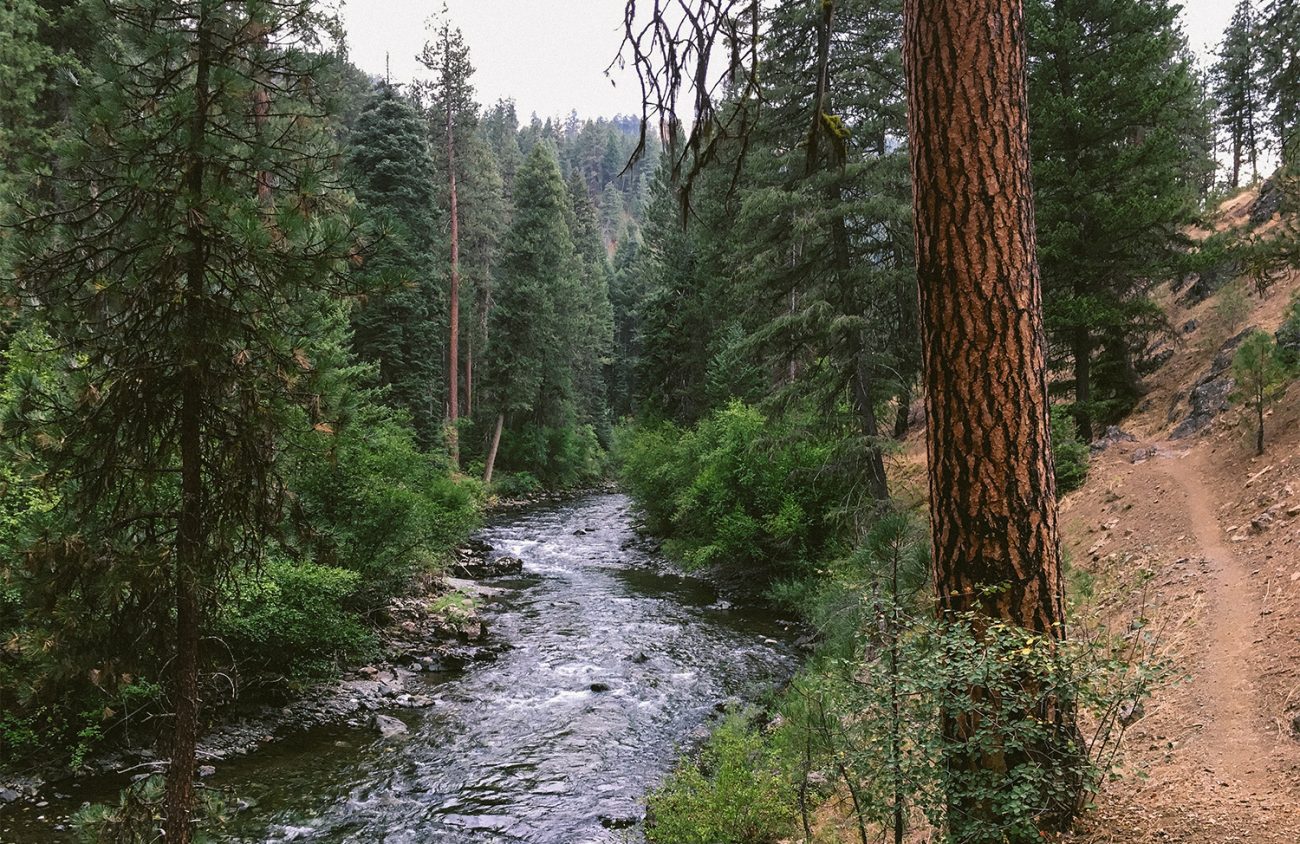Where in Oregon can you find peaks over 9,000 feet and a canyon more than a mile deep, all within a few miles of each other? Where can you chase wildflowers in bloom seven months of the year, see golden eagles soaring, hear the howl of wild wolves and fish for salmon that traveled hundreds of miles? For lovers of all things wild and beautiful, Wallowa Country is calling your name.
Out in the far northeast corner of Oregon between I-84 and the Washington-Idaho borders, the Wallowa Mountains, Eagle Cap Wilderness and other public lands form an ecological bridge between the Rocky Mountains and Cascades, from low to high elevation, and from lush stream sides to dry pine plateaus — supporting healthy populations of deer and elk, and the charismatic predators (like wolves) that feed on them.
While you’ll still find more cows than people or wolves in the area, the wild lands, water and wildlife of Wallowa and Baker counties are a big driver of the area’s economy. Thousands of backpackers, bird watchers, paddlers, hunters, anglers and families seeking a campsite with a view descend on Enterprise and Joseph each summer. With so many incredible options for enjoying the many accessible public lands, it can be hard to know where to start.
Guidebooks — including my own — and websites aplenty tout the majesty and activities of the area. A quick search for some of the most popular options includes checking out Wallowa Lake State Park, a drive through the expansive Zumwalt Prairie Preserve, views from the Buckhorn Overlook and hiking up Hurricane Creek into the heart of the Eagle Cap Wilderness and famous Lakes Basin. But if you want to venture a bit outside the best-known attractions, a great way to get a sense of this far flung corner of our state is to just get yourself out there and talk to the locals who know it best.
A good place to start is at Wallowology, a nonprofit education center in downtown Joseph (look for the mammoth on the main drag). The storefront offers a great little natural history museum and science programs for kids and adults throughout the summer.
The owners of Barking Mad Farm Bed & Breakfast, Rob Klavins of Oregon Wild and Emily Klavins, are another great resource. They pride themselves on offering their guests the inside scoop on enjoying the area, and their front porch is a great place to sit and pick their brains while you take in one of the best views in the county. I did that a few summers ago before setting out on a hiking and camping trip and got some great tips.
While the mountains that dominate the landscape here get most of the attention, for me it is the streams that flow down from the high country and the forests that thrive along them that are the star attractions. They are accessible for a lot more of the year. Rob and Emily pointed me in the right direction to head out from Joseph to lap the Eagle Cap Wilderness in a clockwise direction. I hoped to catch signs of some of the three or four wolf packs that make their home within the wilderness and its edges — an exciting development for a state that hunted wolves to extinction by the mid 20th century.
I headed up the Hells Canyon Scenic Byway south out of town on this beautiful scenic drive through a glacier-carved valley. Eventually a turn took me up the protected Wild & Scenic Imnaha River corridor, past stunning ancient ponderosa pine trees to the Indian Crossing Campground. From there you can hike into the wilderness along this stunning river. The forest is recovering from a 1994 fire. Aspens shimmer in the breeze, and the icy water holds salmon that traveled 300 miles and against huge odds to come home.
The next day, on the south side of the wilderness, I made a home base on Eagle Creek at the Eagle Forks Campground north of the small town of Richland. Here the Martin Bridge Trail follows the Wild & Scenic River corridor into wolf, bear and rattlesnake territory — though the only evidence I found of any of these were elderberry-ridden piles of bear scat. Giant pines and Douglas-fir trees line the canyon slopes, and the crystal clear water roars over giant boulders.
Finally, on the west side of the Wallowas, I hiked from the North Fork Catherine Creek Recreation Area up the popular trail, climbing for miles through a diverse forest and a series of wildflower filled meadows into the high country. Farther in and higher up, the wildflower blooms retreat backwards in time as the snow melts into the forks of Catherine Creek.
A week in Oregon’s northeast corner is a week well spent. But don’t take my word for it. Take the long drive out there and go exploring.
Chandra LeGue of Eugene is the author of the book Oregon’s Ancient Forests: A Hiking Guide and is the Western Oregon field coordinator for Oregon Wild, where she advocates for the protection and restoration of the state’s forests and wild places.
